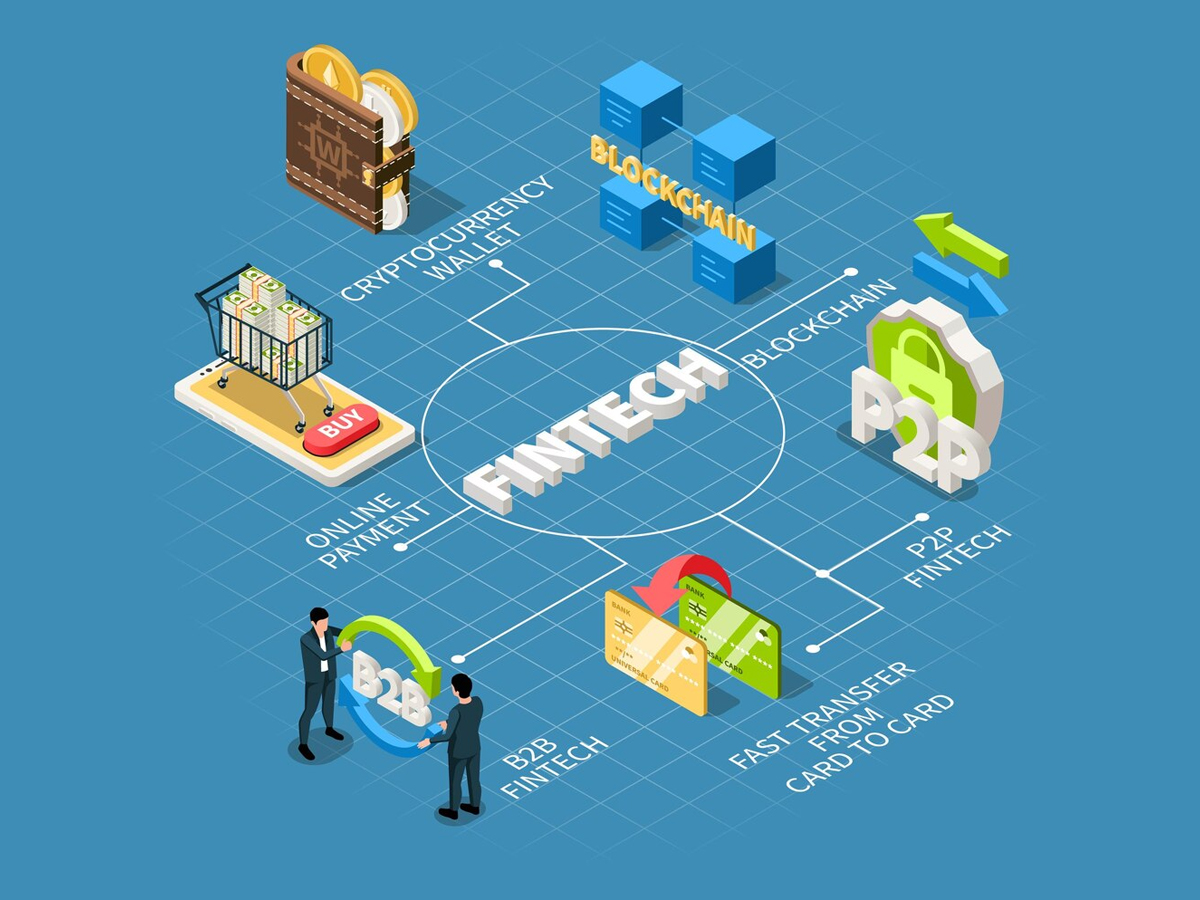The Middle East and North Africa (MENA) region is currently undergoing a significant transformation of its financial landscape, driven by rapid digitalisation and the development of innovative financial services. The region has its sights set on becoming a haven for the world’s most innovative fintech (financial technology) companies and has attracted capital and talent from Europe, the United States and Asia, while fintech innovation hubs in the Gulf have multiplied in recent years.
From digital lending platforms to AI-driven financial-advisory services, fintech innovations are streamlining processes, reducing costs and improving financial-services accessibility for businesses and individuals.
According to recent reports, fintech revenue in the MENA region and Pakistan was estimated at US$1.5 billion in 2022 and is expected to reach US$4.5 billion by 2025. Most GCC (Gulf Cooperation Council) countries have embraced the digital revolution by setting ambitious targets to diversify their economies—resulting in government-led investments and initiatives, including favourable regulations to attract digital financial-services providers. Meanwhile, major banks are also investing in taking their digital products to new levels to meet evolving customer preferences, creating a diversified fintech market.
Some of the notable factors driving the fintech industry include the push towards a cashless society, with digital payment solutions such as mobile wallets, contactless payments, online payment gateways and digital insurance platforms mushrooming. Other key developments driving the sector include growing alternative lending platforms, such as buy-now-pay-later (BNPL) products and blockchain and cryptocurrency solutions.
The MENA region is one of the fastest-growing markets for financial-services providers, with the digital-payments segment accounting for the largest share of the MENA fintech market by application. The region is uniquely positioned for further financial innovation thanks to a tech-savvy population, increasing demand for financial inclusion and an advanced banking ecosystem that accommodates new solutions. In fact, between 2022 and 2023, the United Arab Emirates (UAE) saw a 100-percent growth in digital-banking adoption. Earlier this year, it also undertook the first cross-border transfer of its central bank digital currency (CBDC), the digital dirham.
Several GCC countries have introduced comprehensive frameworks to promote innovative financial products. The Central Bank of the UAE (CBUAE) and the Securities and Commodities Authority (SCA) have been instrumental in supporting the growth of the UAE’s fintech industry. In 2019, the central bank established the Fintech Office to support the sector’s development. More recently, it issued two exciting fintech regulations: the Open Finance Regulation, which introduces an “open finance framework” in the UAE, and the Sandbox Conditions Regulation, which allows fintech companies to trial and refine innovative solutions within controlled settings. While the Saudi Central Bank (SAMA) issued more detailed BNPL guidelines last year, another GCC country, Bahrain, introduced a regulatory framework for open banking.
The UAE is driving MENA’s fintech revolution
The UAE stands out as a leader in the MENA region’s fintech revolution. The government’s strong commitment to innovation has attracted to the country numerous fintech startups and established financial institutions. The presence of a well-established banking sector and a growing pool of investors creates a favourable environment for fintech ventures.
The country has also developed national fintech strategies and established government-backed accelerators and incubators, whereby both the UAE’s public and private sectors are committed to promoting the growth of the fintech market. The Dubai Financial Services Authority’s (DFSA’s) Innovation Testing Licence (ITL) programme and the Abu Dhabi Global Market’s (ADGM’s) Regulatory Laboratory (RegLab) are notable examples of the UAE’s thriving fintech scene.
Meanwhile, the Central Bank of the United Arab Emirates has played a fundamental role in the country’s evolution into the world’s leading fintech hub, focused on creating a robust regulatory framework to promote safe and reliable innovations through improved anti-money laundering and combating the financing of terrorism (AML/CFT). At the same time, CBUAE’s Open Finance Vision and Financial Infrastructure Transformation (FIT) Programme aim to stimulate innovation by promoting data-driven and customer-centric financial models.
These developments align with the country’s Digital Economy Strategy, which endeavours to double the digital economy’s contribution to the gross domestic product (GDP) from 9.7 percent in 2022 to 19.4 percent within 10 years. Notable initiatives include digital-payment infrastructures such as the instant-payment platform Aani and the central bank’s pilot issuances of digital currencies for cross-border and domestic transactions.
The fintech sector’s challenges in MENA
The digital-banking-and-finance sector is complex and rapidly evolving, with numerous advances in operations, RegTech (regulatory technology), cybersecurity and digital transactions occurring every day. This rapid pace of fintech innovation brings both challenges and opportunities. Major challenges to the growth of the fintech market include cyberattacks and security breaches. In general, fintech companies are a target for cyberattacks due to the sensitive data they handle.
Furthermore, the fintech sector is fiercely competitive, with both startups and established financial institutions vying for market share; success in the industry depends on the provider’s ability to stay ahead, continuously innovate and differentiate its offerings. The rapid developments of blockchain, artificial intelligence (AI) and machine learning (ML) technologies have made the challenge even greater. Most importantly, regulatory fragmentation in the region must be addressed to mitigate compliance risks while fostering innovation and growth. More specifically, the gaps in fintech regulation across the MENA region and the lack of a harmonised approach complicate business dealings for fintech firms, creating roadblocks to their development.
This situation calls for building interoperability across the MENA region to ensure secure cross-border payments and facilitate the seamless operation of fintech companies, which often operate in multiple countries. Hence, the continued success of the MENA region’s fintech sector depends on the cooperation of various stakeholders, including financial institutions, regulators and investors. It is also crucial that traditional banks and financial institutions work with fintech companies to utilise their innovative solutions and improve their offerings.
A future shaped by fintech
In my opinion, the future of banking in the MENA region is inextricably linked to fintech. By harnessing the power of innovation and fostering a collaborative environment to tackle regulatory challenges, the region has the potential to emerge as a global leader in financial technology.
With its commitment to innovation and strategic regulatory focus, the UAE is poised to play a pivotal role in developing next-generation fintech products based on AI and blockchain. Other countries in the GCC region are not far behind; Saudi Arabia has set up a US$40-billion fund to invest in AI and other technologies to support its Vision 2030 goal of developing its digital economy and encouraging the evolution of technology-based financial services and solutions.
On the other hand, the emergence of open-banking frameworks promises to democratise financial services further, improving accessibility and promoting innovation in the banking sector. In the GCC, neo-banking players will utilise the opportunities of open banking to go beyond existing consumer and corporate use cases and develop functions such as investment, insurance and logistics management. At the same time, other markets, such as Egypt and Pakistan, will see banks and fintech players integrate efforts to develop innovative solutions through bilateral agreements.
As digital payments become ubiquitous and innovative solutions such as on-demand salaries, BNPL and peer-to-peer lending flourish, traditional banking and fintech players will be forced to adapt further. This rapid embrace of fintech disruption, coupled with strategic partnerships, promises an exciting future in which finance is more accessible, inclusive and empowering than ever before.





